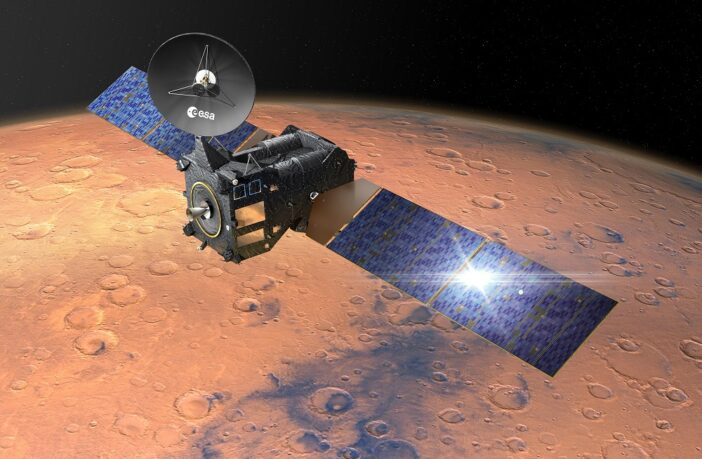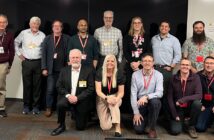A new research grant awarded to scientists at The Open University (OU) will make it possible to investigate the long-standing mystery of ozone on Mars.
The atmosphere of Mars, which is mostly made of carbon dioxide (CO2), has trace amounts of ozone present, at levels far lower than that found on Earth. A long-standing problem in martian climate research has been a mis-match between the amount of ozone that should be there, compared to what we observe.
Mars climate models can reproduce the way the ozone is distributed in the atmosphere of Mars, but have historically never been able to reproduce the amount of ozone that is actually observed, with modelling consistently under-predicting abundances and revealing a gap in our understanding of the chemical processes occurring on present-day Mars.
To answer this problem, Prof. Manish Patel, who leads the OU’s Atmospheric Research and Surface Exploration group, has been awarded £420,035 from the UK Space Agency to investigate this problem. Patel and his team will use the latest results from the European Space Agency’s ExoMars Trace Gas Orbiter (TGO) mission, that continues to observe the atmosphere of Mars from orbit.
Prof. Patel co-leads the Nadir and Occultation for MArs Discovery (NOMAD) instrument on TGO, which has been observing Mars since 2018. The team will be using the large dataset of observations collected to date, along with the very latest observations to compare and incorporate into an internationally-leading global climate model of the Mars atmosphere.
Prof. Patel said:
“We are very excited to be tackling this long-standing mystery that has puzzled the Mars atmospheric community for many years now. Part of the reason this issue has remained a mystery for so long is that you need a very special combination of spacecraft instrumentation, atmospheric retrievals and global climate modelling expertise to tackle it.
Here at the OU, we have the skills, data and the capability to do this, as recognised by the award of this funding to tackle this problem.”
The project makes use of a technique that only a few groups around the world have the capability to perform in the context of Mars, called data assimilation. The application of this technique to chemical species has been pioneered by Dr. James Holmes, a UK Space Agency research fellow and co-applicant on the project.
Dr. Holmes explains:
“The particular technique of chemical assimilation on Mars, for which we are currently the only group in the world that have this capability, has been developed through UK Space Agency grants that have supported me for several years.
“I am excited to now be able to use and apply this technique to one of the puzzling mysteries related to martian chemical processes in the present-day atmosphere. This unique capability also helps our team to train and inspire the next generation of Mars scientists in atmospheric research.”
The OU co-leads the NOMAD spectrometer on the ExoMars Trace Gas Orbiter mission and has a significant involvement in the ACS spectrometer and CaSSIS stereo imager on the same mission, funded through support from the UK Space Agency.



